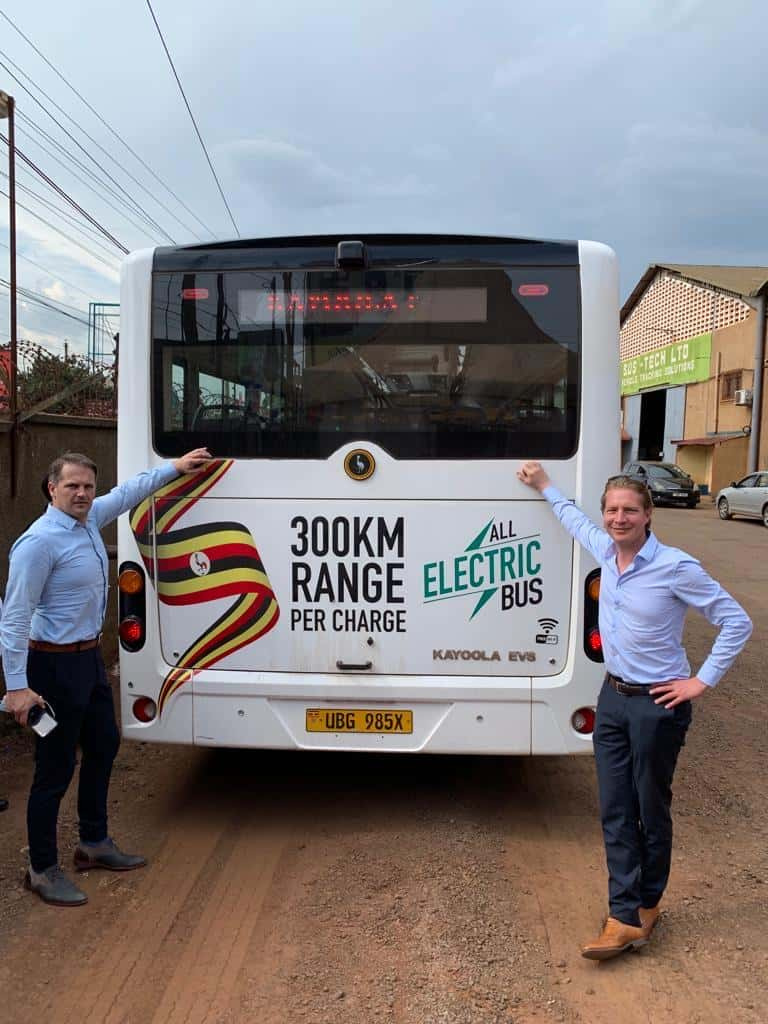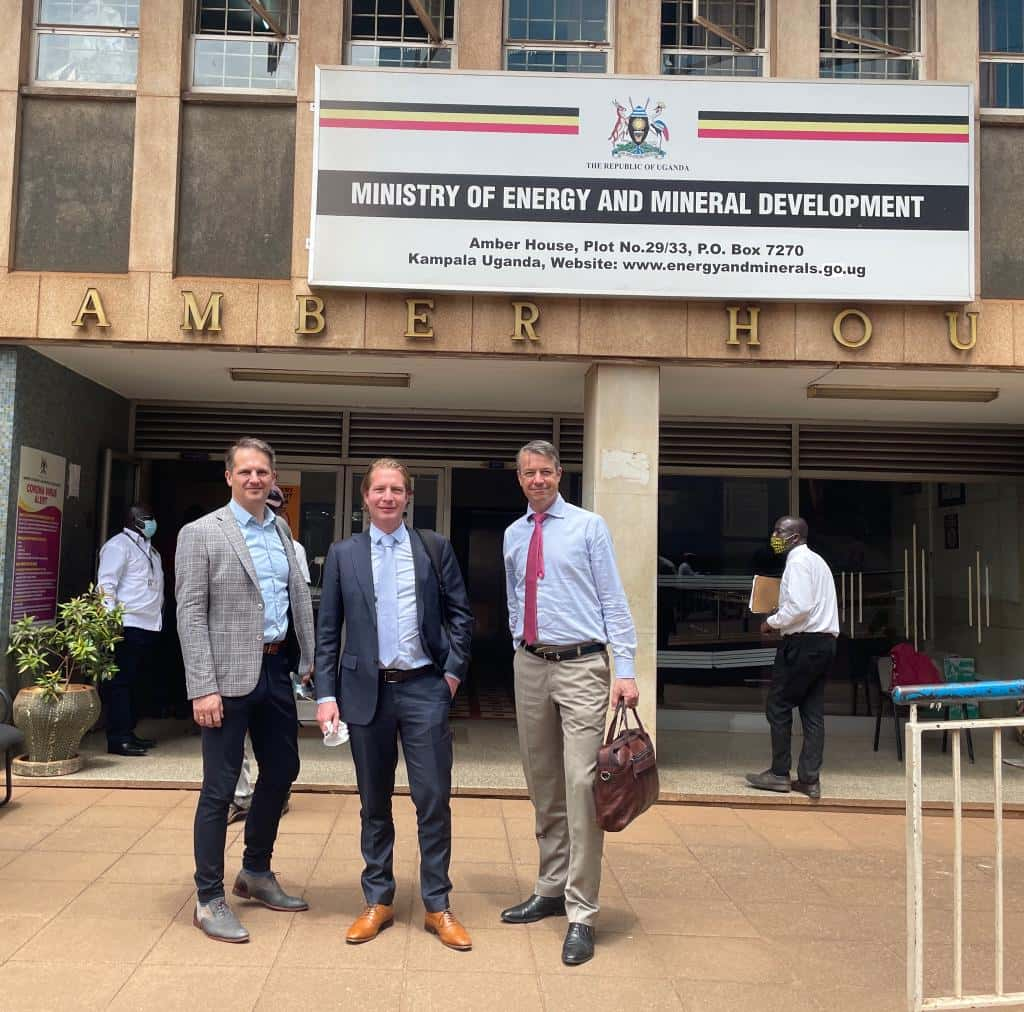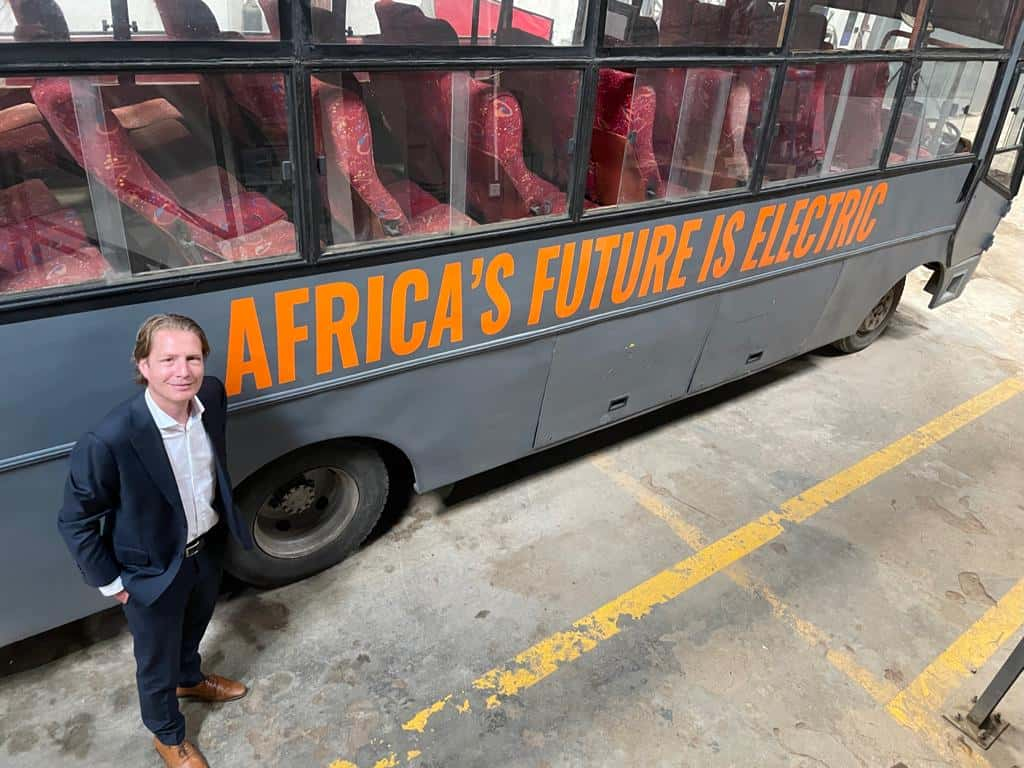Who is Bas Hoefman and what is NTCS?
NTCS, established in 2001 and headquartered in The Hague, The Netherlands, is a boutique consultancy firm in the Telecom, Energy and Electric Mobility domain. The company has a broad spectrum of international experience and knowledge in the e-mobility sector, especially in the field of charging infrastructure, while working on a strategic, tactical, and operational level. NTCS aims to increase its market position in the African and other emerging markets and establish itself as a well-known energy and eMobility specialist with a strong focus on developing EV charging ecosystems in close collaboration with governments and other key stakeholders from both the public and private sector.
Bas himself has a background in banking, mobile marketing and mobile-health communication and has a solid understanding of the African telecommunications market. He has lived and worked in Uganda for 5,5 years. Bas is Area Director Africa at NTCS and sees great opportunities in the fast-developing eMobility market in Africa.
Why focus on eMobility in Africa?
‘African governments are increasingly incorporating eMobility in their plans as there is a strong need for clean energy solutions in most large cities in Africa. Transport is one of the most polluting sectors across the board and eMobility holds the key to sustainable transport, more habitable cities and successfully fighting climate change. Since it’s a relatively new industry there is a lack of specific EV knowledge and trained personnel on the continent to operate and maintain EVs. And since many countries in Africa are mainly in the assessment and planning stage with regards to developing eMobility, we believe we have the opportunity to build it right from the start and make a real difference.
As the global shift to electric vehicles (EVs) is opening new business opportunities and many other potential benefits such as the creation of local value chains and employment. The knowledge, experience, and skills in the Netherlands regarding the architecture of charging ecosystems, planning around public areas for charging, interoperability, and incentives are valuable assets that we want to export to emerging markets and, in this manner, contribute to the reduction of greenhouse gas emissions and air pollution in Africa.’

An overview of EVs in Uganda
‘Uganda has the ambition to move in parallel with the rest of the world to deploy its home-grown e-mobility technologies through companies such as Kiira Motors Corporation, Zembo, Bodawerk and the International University of East Africa (IUEA), and mainly focus on two / three wheelers and public transport. However, a clear government plan to align the country with the global mobility trends still needs to be developed. Uganda is well positioned to have an exceptionally green EV market since 90% of the electricity used in the country is generated from hydropower.
The gradually increasing momentum behind EV adoption – both from the side of the consumer and the automotive industry – suggests that electrified vehicles will play an important role in Uganda’s mobility sector. The challenge however is in the charging infrastructure, powered by renewable grid-tied or off-grid solutions keeping pace with market interest. A well-planned network of charging stations with sufficient energy capacity is urgently needed for the market to build trust for potential EV-buyers that they can always charge, as well as a scalable market model for EV charging that will attract investors and new businesses.
Kiira Motors Corporation (KMC) and the Ministry of Energy and Mineral Development see immense potential in utilizing the locally generated surplus hydro power in Uganda and have the desire to establish and pioneer the EV charging infrastructure to leapfrog towards eMobility and sustainable transport solutions. Spurred on by this desire, KMC has developed its flagship product, the Kayoola EVS, a full electric bus aimed at revolutionizing the travel experience of commuters and the operations experience of African urban transport agencies.
Triggered by NTCS’ strong reference projects in the Caribbean, Latin America and Europe, the Ugandan Investment Authority (UIA) has introduced KMC to NTCS in June 2021. KMC indicated a need for expert advice from NTCS on developing EV charging ecosystems and topics such as roaming and interoperability, as well as experience with implementations and knowledge development. In support, NTCS received a grant from the Dutch Enterprise Agency (RVO) and performed a feasibility study on setting up a viable EV charging Ecosystem in Uganda. Currently we are exploring the possibilities to follow up and broaden the study as well as a pilot programme.
There are still many challenges since the Ugandan market is at a very early stage of development and there is a lack of government funding for eMobility. To be specific, the Ugandan government has many ideas, but the number of concrete initiatives and budgets available to further develop the EV market is limited. the idea is still to develop an EV infrastructure with a broad focus in mind: a clear roadmap from public government and strong involvement from private market players. Part of the challenge is how to accommodate multiple electrified forms of transportation with the most efficient charging infrastructure ecosystem. Another challenge is to develop an open ecosystem that supports current developments but is also prepared for future solutions and services.
Ongoing developments include a recently established eMobility task force / working group consisting of key stakeholders to boost eMobility in Uganda. At current, we have ongoing discussions with development agencies such as UNEP and GIZ and private sector players to further develop the EV market in Uganda.’
Are there ways to make EVs more attractive?
‘Yes, there many opportunities governments can create to increase EV adoption and they are mainly along the following categories: EV purchase, EV operations, EV Charging infrastructure, and EV (charging) investment incentives. For example, by charging lower prices, providing incentive services, tax incentives, incentives on specific fleets, and free travel service provided by electric busses a government can promote EV uptake and usage. In addition, there are opportunities to develop business models including job creation, knowledge transfer and training programs as well. Compared to Kenya and Rwanda, the Ugandan EV market is still in an early stage, but it is catching up rapidly. The Incentives need to be in alignment with the country’s goals with regards to eMobility and targeted at the right customer groups.
So, if you look at Kenya for example, the cost of production for electric cars is still too high and the tax incentives are necessary to lower the retail cost for the consumers. Tax incentives are needed on the duties payable both on the components and whole units to make it appealing to consumers. Currently, the only tax incentive that has been implemented is the reduction of excise duty under the Finance Act 2019 from 20% to 10% on the importation of EVs. However, all the other taxes that come with the importation of cars still apply to EVs.
Rwanda is much further along in this respect, in April 2021 the Government of Rwanda approved a strategy for electric mobility adaptation aimed at increasing electric vehicles and motorcycles. In addition, the government of Rwanda has made commitment to invest $1 billion to convert 20% of vehicles to electric automobiles by 2030.’

And the EV market in Africa?
‘The EV market in Africa is moving at a fast pace, Kenya alone has over 50 eMobility start-ups to date. The opportunities that arise are particularly in the electric two- and three-wheelers segment where there is potential for employment, local manufacturing and assembly, cleaner renewable energy, and business opportunities regarding charging and battery swapping.
As mentioned before, Rwanda is leading the way in the promotion of e-mobility through its recent push of policy measures that include reduced electricity tariffs for EVs, zero VAT tax on EV consumables, exemption from import and excise duties and rent-free land for charging stations.
Kenya has also obtained critical market momentum to stimulate the adoption of electric mobility and has set a target of 5% of all newly registered vehicles to be electric by 2025. Moreover, in Kenya, 64% of market players in e-mobility have invested in local assembly. The Kenya-based Association for Electric Mobility and Development in Africa (AEMDA) states that East Africa has been the midpoint of Africa’s radical shift to electric mobility.’
NTCS outlook
‘At current, and with regards to the EV value chain, NTCS is working in the Caribbean, Latin America and East and Southern Africa. NTCS is increasingly shifting more towards the energy sector as they see strong convergence between the Telecom and the Energy sector: NTCS assists energy companies and utilities in digitalizing their operations and planning by implementing smart grids, smart metering, billing systems, management of big data, and simulations for grid planning. These digital solutions increase the reliability of the electricity system and ease the integration of new technologies, such as EV charging and roof-top solar systems. Within the sector, NTCS contributes to EV charging and roof-top solar systems by initializing projects and developing well-aligned ecosystems in which these projects add value to the entire sector.
Especially regarding eMobility NTCS has identified interesting developments and opportunities in Africa and other emerging markets, such as vehicle-to-grid opportunities. Electric vehicles could be used as mobile batteries to supply other products with electricity. This is specifically interesting for emerging markets. While cars are present, there is often a shortage of electricity supply and an overload of shortages and outages. We see the potential to provide electricity from an EV back-to-back to the electricity grid. This can help to integrate fluctuating renewable energy flows easier, creating a more sustainable and reliable energy system for households and companies in the region.
Future developments in the African and Ugandan EV market are promising. Most likely, the market will transit in a similar fashion to the solar market. At first, there are many initiatives, and in the end, only a few serious parties remain in the sector and become successful. If these parties work together, there could be one standard model implemented in the market. When this transition is supported by government initiatives, clear policies and regulations, funding, and private sector investments, there will be a bright future ahead .’



